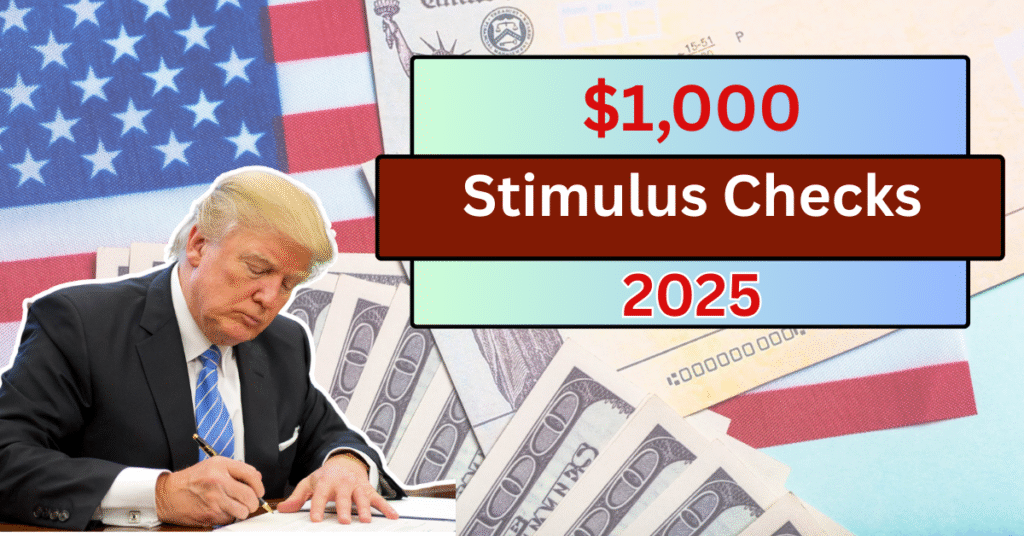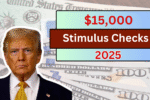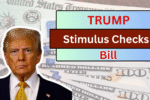In response to rising living costs and economic difficulties faced by many renters, several states in the United States have introduced rent rebate programs to offer financial relief. These programs aim to help eligible individuals cover part of their rent payments by providing a one-time stimulus payment.
One such program, offering a $1,000 stimulus payment, is designed to assist renters who are struggling with housing expenses due to financial hardship. In this article, we will explore the details of who can apply for the $1,000 stimulus payment, the application process, and important considerations to keep in mind to ensure you can take full advantage of this financial assistance.
What Is the $1,000 Stimulus Payment?
The $1,000 stimulus payment is part of a rent rebate program aimed at supporting renters with low to moderate incomes who face challenges paying for their housing. The one-time payment helps ease the financial burden caused by rising rent costs and other economic factors. Renters who qualify for the program may receive up to $1,000 to be used towards their rent, providing essential relief to households that may struggle to make ends meet.
Many states are running these programs at the state level, and each one has specific guidelines for eligibility, how to apply, and how the payments are issued. Some states offer a fixed $1,000 payment, while others may adjust the amount based on income levels, household size, and rent payments.
Who Is Eligible for the $1,000 Stimulus Payment?
The eligibility requirements for the $1,000 stimulus payment vary depending on the state and the program. However, the general eligibility criteria tend to follow some common guidelines, which are as follows:
1. Income Limits
Most states offering the rent rebate program have income limits that applicants must meet. The goal of the program is to help low to moderate-income renters who are struggling to pay their rent. These income limits are typically set based on the federal poverty level or the median income for a specific area. In most cases, applicants who fall below a specific income threshold are eligible for the payment.
The income limit can vary widely depending on the state, but it is essential to know that the lower your income, the more likely you are to qualify for the full $1,000. For example, applicants with an income close to or below the poverty level are likely to receive the full payment, while those with slightly higher incomes may receive a reduced amount.
2. Proof of Residency
To qualify for the rent rebate program, you must be a renter, not a homeowner. Most states require applicants to provide proof of their residency status. This can include submitting a lease agreement, utility bills, or any document that shows you are renting your current home or apartment. Renters may also need to prove that they are the primary residents of the rental unit and have been living there for a certain period.
It is crucial to check with your state’s program to determine exactly what documents are accepted as proof of residency.
3. Rent Payment Records
Since the rent rebate program is designed to help renters, applicants will need to show that they have been paying rent. States may require documentation such as bank statements showing rent payments, or receipts from the landlord indicating that you have paid rent regularly. Some states may ask for information about your rent amount to ensure the payment aligns with the actual expenses.
Being in good standing with your landlord is essential for eligibility, as the program is aimed at helping those who are facing financial difficulty while still managing their rent payments.
4. Age Requirements
While some states do not have age restrictions for the rent rebate program, others may prioritize seniors or disabled individuals. If the program targets older adults or individuals with disabilities, applicants may be required to meet specific age or disability requirements. For instance, you may need to be over a certain age, such as 65, to apply for the rebate.
It is essential to check whether age or disability status is a determining factor for eligibility in your state’s program.
5. Citizenship and Legal Residency
To apply for most rent rebate programs, you must be a U.S. citizen or legal resident. If you are a non-citizen, you will likely need to provide proof of your legal residency status, such as a green card or work visa. Each state may have different documentation requirements, so make sure to check with your local government to understand the necessary paperwork.
How Much Will You Receive?
Once your eligibility is confirmed, you can expect to receive a one-time payment to assist with rent costs. Most programs offer a fixed amount, such as $1,000, but the total payment may vary based on several factors, including your income level, household size, and rent expenses.
In some states, payments may be a flat $1,000, but other states may adjust the payment based on the individual’s needs. For example, low-income households or those paying higher rents may be eligible for the full $1,000, while those with slightly higher incomes or lower rents may receive a reduced amount.
Some states may use a tiered system to determine how much money an individual or household will receive. This means that applicants with the lowest income levels could receive a larger payment, while those who are eligible but have higher incomes may receive a reduced amount.
How to Apply for the $1,000 Stimulus Payment
The application process for the $1,000 stimulus payment is straightforward, but it is essential to follow all steps carefully to ensure that your application is accepted and processed on time. Here’s a step-by-step guide on how to apply:
1. Check Eligibility
Before applying, verify that you meet all the eligibility requirements. Each state has its own set of rules, so check with your local government or visit your state’s program website to find out if you qualify for the rent rebate payment. You may be required to meet specific income limits, residency requirements, and provide proof of rent payments.
2. Gather Required Documents
To apply for the rent rebate program, you’ll need to gather several important documents, including:
- Proof of income (pay stubs, tax returns, etc.)
- Lease agreement or rent payment records
- Bank statements showing rent payments (if applicable)
- Proof of legal residency or citizenship status (if required)
- Any documents verifying your age or disability status (if applicable)
Make sure you have all the necessary documents before starting the application process. This will save time and prevent delays.
3. Complete the Application
Most states offer an online application form for the rent rebate program. Some states may also allow you to submit a paper application. Either way, make sure to fill out the application form accurately and completely. The form will typically ask for your personal information, income details, and documentation to support your application.
Double-check the form to ensure there are no errors or missing information before submitting it.
4. Submit the Application
Once the application is complete and you have attached all required documents, submit it to the appropriate state office. You may need to submit it online, by mail, or in person, depending on the state’s process. Be sure to follow the instructions provided carefully and meet any deadlines for submission.
5. Wait for Processing
After submitting your application, the state will review your information and verify your eligibility. This process may take several weeks, so be patient. You may receive a notification or letter from the state regarding your application status, including whether you were approved or if additional information is needed.
6. Receive the Payment
If you are approved for the rent rebate, you can expect to receive your payment within a few weeks to a few months, depending on the state’s processing timeline. Payments may be sent via direct deposit or by check, depending on the state’s policy.
Important Things to Know
- Application Deadlines: Each state’s rent rebate program has specific application deadlines. Be sure to submit your application well before the deadline to ensure you are considered for the payment.
- Program Availability: Not every state offers a rent rebate program. Make sure to check if your state has this program available before applying.
- Other Financial Assistance: Some states may offer additional forms of financial assistance, including utility assistance or eviction prevention programs. Be sure to look into all available resources.
Conclusion
The $1,000 stimulus payment is a valuable resource for renters struggling to meet their housing costs. By meeting the eligibility requirements and following the application process, you can receive the financial relief you need to stay on top of your rent payments. Make sure to check your state’s program details, gather the necessary documents, and submit your application on time to benefit from this one-time payment.
This program is a great way to provide immediate financial relief, especially for those who are facing housing instability. Keep an eye on deadlines and stay informed about the application process to ensure that you can receive the support you deserve.




